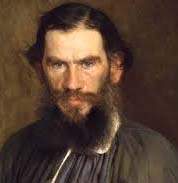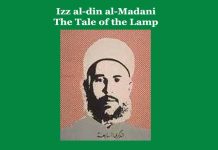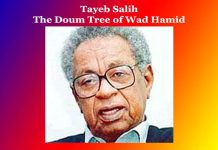Tolstoy | The Imp and the Peasants Bread | An Analytical Study
Tolstoy | The Imp and the Peasants Bread | An Analytical Study
Tolstoy | The Imp and the Peasants Bread | An Analytical Study
‘The Imp and the Peasant’s Bread’ is a Russian short story with some features of an ancient tale written by Leo N. Tolstoy (1820-1910) that deals with the theme of the sin of abundance.
The story is about a poor peasant. One morning he went off to plough his field taking with him a piece of bread. Before he got his plow ready he put his bread under his coat and hid it under a bush and started work. After some time he got tired and felt hungry. Then he stopped his work and went to get his bread. He searched minutely but did not find the bread. It was missing. In fact, the bread was taken away by an imp who was in hid in the bush. The imp thought that the peasant would call his names and became angry. But he did not. Instead, the peasant said, “Whoever took the bread needed it. May it do him good.” He went to a well, drank some water and resumed his work. The imp being disappointed went back to the master Devil and told everything that had happened. The Devil was angry and sent him back to get things right. Then the imp hurried back to earth and changing himself into a working man began to work with the peasant. In the first year, the imp advised the peasant to sow corn in a low-lying damp place. The year happened to be a very dry one, and the crops of the other peasants were all burned up by the sun. But the peasant harvested too much. In the second year, the imp advised him to sow on the hill and it happened to be wet summer. The peasant harvested more grain to spare than before. Then the peasant showed him how to make vodka from it. The peasant learned it and began to drink excessively and to give it to his friends.
Then the imp went back to his master Devil and claimed proudly that he had succeeded in his mission. The Devil came to see for himself. Coming to the peasant the Devil saw that the peasant had lost all his humane qualities and had been behaving like wild animals- like foxes, pigs and wolves. The Devil thanked the imp and gave him a position of high honour.
Seemingly there are three characters in the story- first the peasant, the imp and the Devil. But the peasant is the principal character. He is a type of well-to-do people because when one gets much than what is needed then he becomes inhumane and immoral so happens to the peasant. When he was poor he was good and moral but when he became rich enough then he lost all his humane qualities.
The other characters are the imp and the Devil but they remain in the background and operate their functions through the peasant.
In narrating the story the author has employed the Objective Narrative Method with skill
The story, in Structure, is a perfect one. It bears visibly all the stages of a good short story. The opening is direct. In the opening, the storyteller introduces his principal character, the peasant. Complication begins when the imp comes to work the peasant as his working man. It reaches its climax when the Devil visits the peasant and found him behaving like a beast in human form. The story seems to be ended in the climax.
The Setting of the story is consistent with the events and situation. The author gives a good deal of description of his main character along with the environment of his event.
The Dialogue employed in the story is very logical as he uses them sparingly but all the dialogues take his story a step forward and unfold the inner nature and motives of his characters.
The author has expressed his Philosophy of Life that the blood of the wild animal is always in men but as long as men have only what they need, it remains under control and when they become rich then the wild blood in them begins to operate their evil functions.
The Language of the story is very simple as it is characterized by the use of concrete and formal words and phrases and is free from emotional expression.
All the Qualities of a good short story as —unity of purpose, brevity, spontaneity and universality are maintained in this short story with skill.
As a short story, it is written in ideal Length
It has some features of a tale of ancient times. In an ancient tale, it is seen that a story is told to explain some moral or religious lesson. So is done in the story.
As all the component elements along with required qualities of a good short story are present in it, in a logical order, so it may be called a short story of the first grade. 0 0 0
Tolstoy | The Imp and the Peasants Bread | An Analytical Study
Read More: Leo Tolstoy’s Short Stroy ‘God Sees the Truth But Waits’-An Analytical Study
N. B. This article entitled ‘Tolstoy | The Imp and the Peasants Bread | An Analytical Study’ originally belongs to the book ‘World Short Story Criticism‘ by Menonim Menonimus. Tolstoy | The Imp and the Peasants Bread | An Analytical Study The Imp and the Peasants Bread
Books of Literary Criticism by M. Menonimus:
- World Short Story Criticism
- World Poetry Criticism
- World Drama Criticism
- World Novel Criticism
- World Essay Criticism
- Indian English Poetry Criticism
- Indian English Poets and Poetry Chief Features
- Emily Dickinson’s Poetry-A Thematic Study
- Walt Whitman’s Poetry-A Thematic Study
- Critical Essays on English Poetry
- Tawfiq al-Hakim’s Novel: Return of the Spirit-An Analytical Study
- Tawfiq al-Hakim’s Novel: ‘Yawmiyyat Naib Fil Arayaf’-An Analytical Study
- Analytical Studies of Some Arabic Short Stories
- A Brief History of Arabic Literature: Pre-Islamic Period …
Books on Linguistics by M. Menonimus:
- A Brief History of the English Language
- Essays on Linguistics
- My Imageries
- Felicitous Expression: Some Examples
- Learners’ English Dictionary
Related Searches:
- Short Stroy Criticism
- The Indian English Short Story
- Individual and Society …
- ‘Deliverance’ by Premchand Analysis
- Summary of Rabindranath Tagore’s ‘The Exercise Book
- Short Story ‘Yellow Fish’ Essay Example
- Notes on Roger Mais’s ‘Blackout’
- ‘Blackout’ by Roger Mais
- ‘The Dog of Tetwal’ Saadat Hasan Manto
- The Three Questions
- R. K. Narayan Biography, Books
- Short Stories R. K. Narayan
- ‘Lawley Road’ by R K Narayan
- The Peasant’s Bread’ Summary Notes
- The Imp and the Peasant’s Bread …











